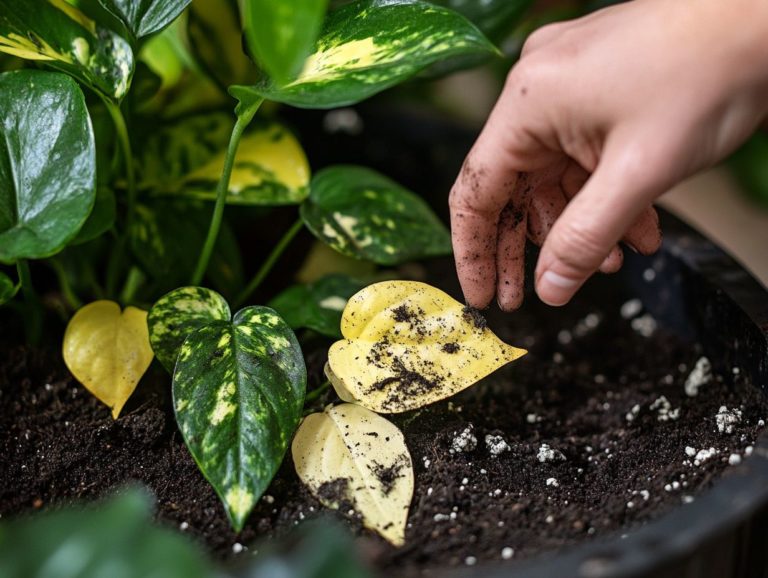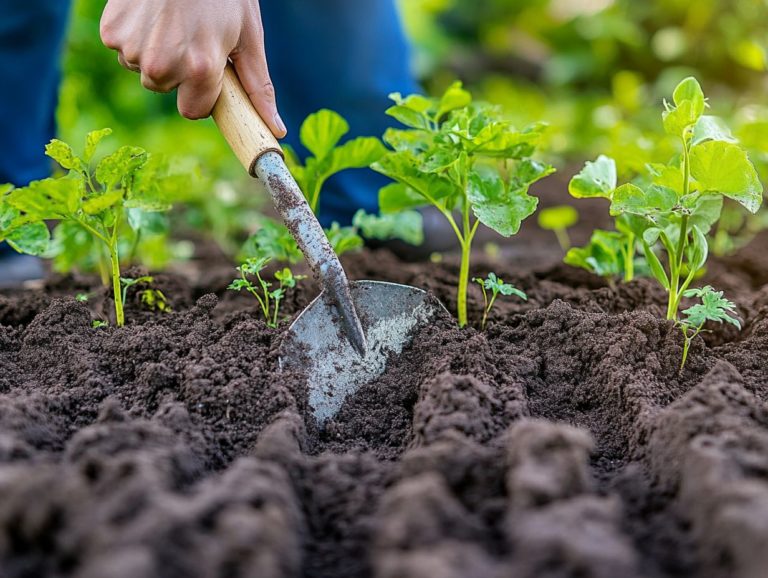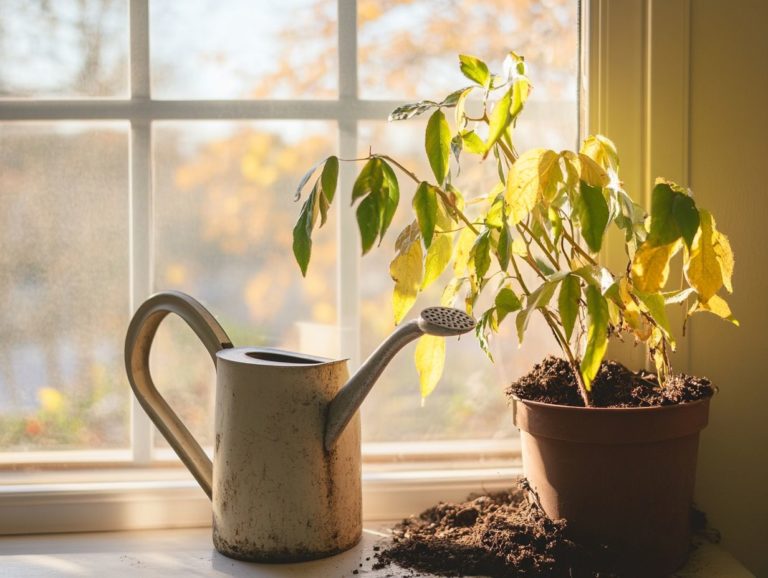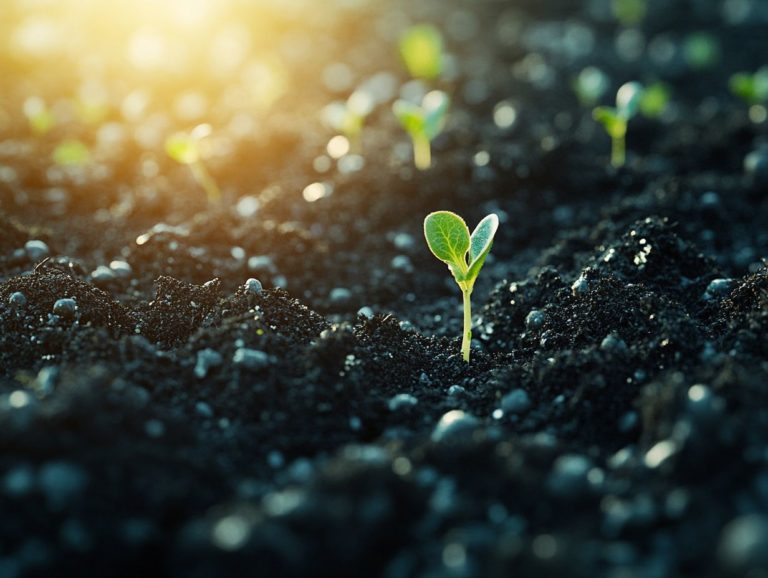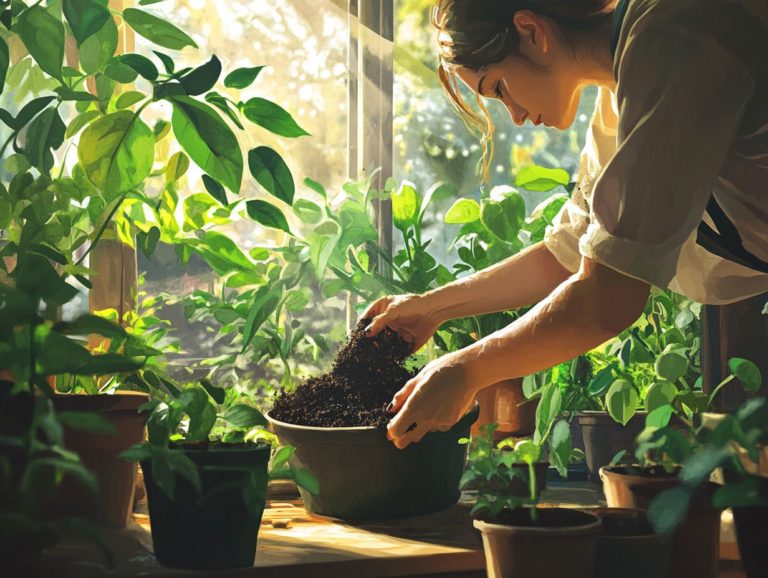Using Coffee Grounds in Indoor Plant Soil
Are you seeking an eco-friendly method to elevate the vitality of your indoor plants? Incorporating coffee grounds into your soil could be the straightforward solution you’ve been searching for.
Rich in nutrients and beneficial properties, coffee grounds can significantly improve soil quality and stimulate plant growth.
This article will guide you on how to prepare and apply coffee grounds effectively, spotlight the plants that flourish with this aromatic addition, and provide valuable gardening advice while outlining any potential risks you should keep in mind.
Get ready to transform your indoor garden into a thriving oasis!
Contents
- Key Takeaways:
- How to Prepare and Use Coffee Grounds
- Types of Plants that Benefit from Coffee Grounds
- Potential Risks and Considerations
- Frequently Asked Questions
- Can I use coffee grounds in my indoor plant soil?
- How should I incorporate coffee grounds into my indoor plant soil?
- What type of plants benefit from coffee grounds in their soil?
- How often should I add coffee grounds to my indoor plant soil?
- Can I use coffee grounds as a substitute for fertilizer?
- Are there any downsides to using coffee grounds in indoor plant soil?
Key Takeaways:

- Use coffee grounds for a cost-effective, natural boost to your indoor plants’ health.
- Properly preparing and applying coffee grounds is essential for achieving their full benefits, including drying and storing them correctly to prevent mold growth.
- While coffee grounds can benefit many indoor plants, it is important to be cautious of overuse and consider alternative uses, such as composting or using them as a natural pest deterrent.
Benefits of Adding Coffee Grounds to Soil
Coffee grounds enrich your soil, making it a fantastic resource for all plants. Used coffee grounds provide nitrogen, acting as a natural fertilizer that contributes to plant growth and overall health.
This sustainable approach not only recycles waste but also enriches the soil with rich organic matter and trace minerals essential for various plant species, especially acid-loving favorites like hydrangeas and azaleas. It promotes better moisture retention and helps maintain a balanced pH level, making coffee grounds a go-to for gardening enthusiasts who appreciate easy maintenance solutions.
Incorporating used coffee grounds into your soil enhances airflow, creating an ideal environment for root systems to expand and thrive. As the grounds decompose, they release beneficial nutrients like potassium, crucial for flowering and fruiting, alongside their nitrogen content.
For your houseplants, a light sprinkling mixed with potting soil can work wonders and also help combat pesky intruders like fungus gnats. In your outdoor garden, mixing coffee grounds into the compost pile boosts fertility and attracts worms, which further aerate and enrich the soil.
Whether you re nurturing orchids or tending to a vegetable patch, coffee grounds are a versatile and eco-friendly choice for maintaining vibrant, healthy plants.
How to Prepare and Use Coffee Grounds
To use coffee grounds effectively, understand their roles as compost material and liquid fertilizer, pivotal for elevating your plant care practices.
Mix used coffee grounds into your compost pile to boost its nutrient content. To create a liquid fertilizer, dilute the grounds with water to benefit an array of plant species, from cherished houseplants to flourishing outdoor gardens.
This sustainable approach not only nurtures healthy plant growth but also cultivates a meaningful connection between your gardening endeavors and environmental stewardship, reflecting modern horticultural practices.
Properly Storing and Drying Coffee Grounds
Spread your used coffee grounds on a tray to prevent moisture. This stops mold from developing.
Allow the grounds to air dry before placing them in an airtight container. This simple process preserves the nutrient content and keeps the grounds fresh for composting or direct application to your houseplants and outdoor gardens.
Regularly check the moisture content of the coffee grounds. A quick method is to take a small handful and squeeze it; if moisture drips out, they need more drying time.
Store your coffee grounds in a cool, dark place to keep them fresh and effective. Label the container with the date to ensure you use the oldest grounds first for maximum effectiveness.
By following these practices, you can keep your coffee grounds mold-free and rich in nutrients, enhancing the health of your soil and plants.
Applying Coffee Grounds to Soil
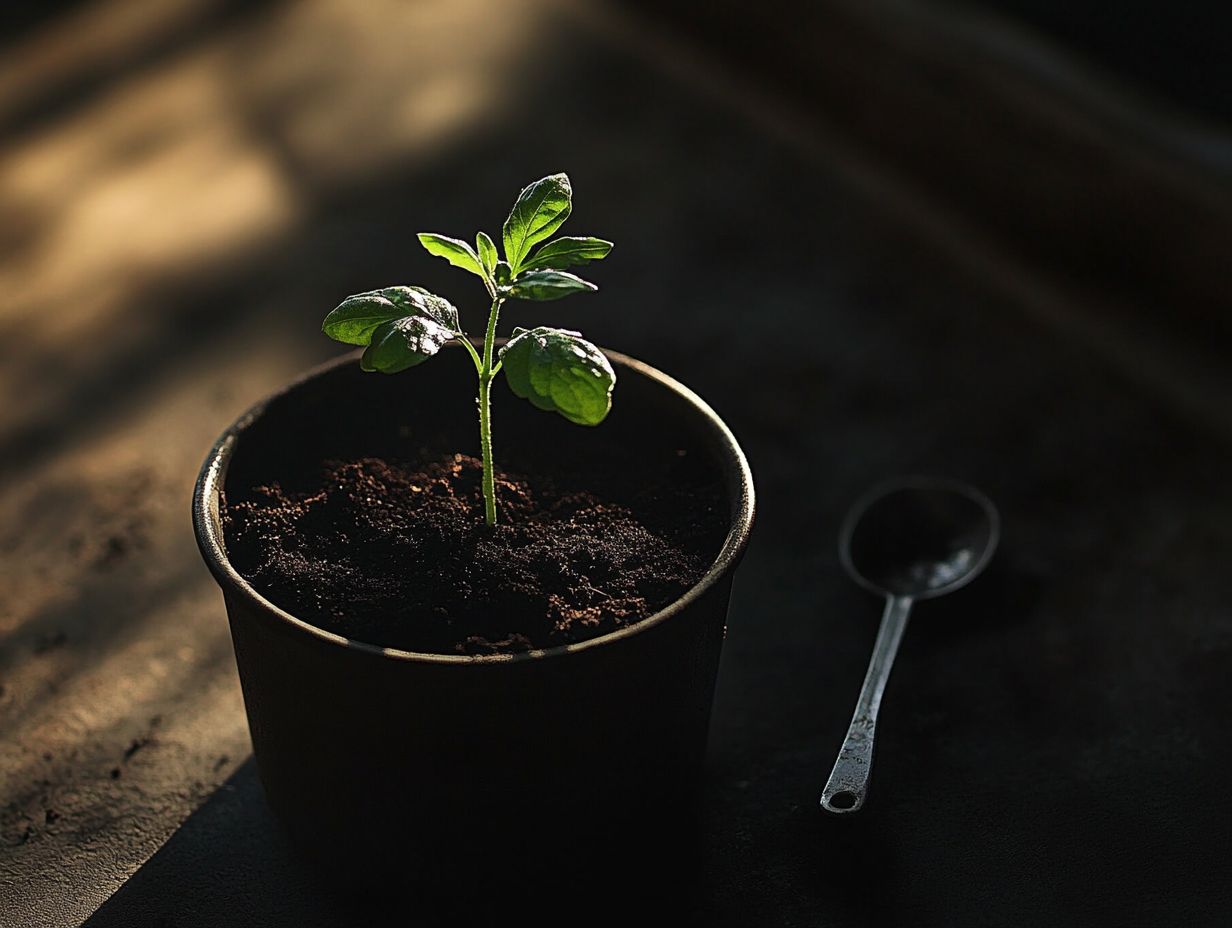
Applying coffee grounds to your soil can work wonders for plant growth by enhancing nutrient balance and providing essential minerals. When incorporated properly, coffee grounds enrich your soil with nitrogen and potassium while improving aeration and drainage.
Apply them in moderation; too much can lead to nutrient toxicity. A balanced approach is key to maintaining the health of your indoor and outdoor plants, avoiding issues like root rot.
Understand the specific needs of different plants. For instance, acid-loving plants like blueberries and azaleas thrive with a modest sprinkle of coffee grounds. More robust vegetables require a measured touch aim for no more than 10% grounds in their soil mix.
Timing is crucial. Spring is the perfect time to incorporate coffee grounds just before the growing season. Fall applications can enrich your soil through the winter months. Keep in mind that coffee grounds can slightly increase soil acidity, enhancing nutrient availability. Monitor this to ensure you re not affecting plants that prefer neutral to alkaline conditions.
By adopting these strategies, you ll promote healthier plants and contribute to sustainable gardening practices within the gardening community.
Types of Plants that Benefit from Coffee Grounds
Incorporating coffee grounds into your soil can be a game changer for various types of plants, especially those that thrive in acidic conditions, like hydrangeas, azaleas, and blueberries.
The nitrogen and potassium in coffee grounds deliver essential nutrients that tackle common deficiencies, fostering robust growth and vibrant blooms.
Vegetables like tomatoes also benefit from the organic matter and trace minerals in used coffee grounds. They are a valuable asset in your garden’s ecosystem, aligning with effective gardening tips.
Start using coffee grounds today to give your plants the boost they need!
Plants that Thrive in Acidic Soil
Plants that thrive in acidic soil are known as acid-loving plants. They can benefit greatly from adding coffee grounds.
These grounds help lower acidity levels, enhancing the soil’s acidity. Varieties like hydrangeas and azaleas respond particularly well, showcasing improved growth and vibrant blooms when you incorporate coffee grounds into their care routine.
The organic matter within coffee grounds also aids in moisture retention, which is essential for these plants’ unique growing conditions.
It s vital to grasp the importance of soil acidity for these species. Many plants find it challenging to absorb essential nutrients in alkaline environments.
By integrating coffee grounds, you’re not only working toward the ideal pH balance but also boosting microorganism activity in the soil, promoting healthier root systems.
For optimal results, regularly test your soil acidity using simple test kits available at garden centers. You can apply coffee grounds sparingly; mix them into the top layer of soil or add them to your compost pile.
This approach creates the perfect growing environment for acid-loving plants while also nurturing beneficial microorganisms.
Plants that Benefit from Added Nutrients
Certain plants, particularly those that thrive in nutrient-rich soil, will greatly benefit from adding coffee grounds. This addition helps enhance nutrient balance and overall plant health.
Take crops like tomatoes and blueberries, for instance. They’ve been known to exhibit remarkable growth when their growing medium is enriched with the nitrogen and trace minerals found in used coffee grounds.
These organic enhancements elevate the nutrient profile of the soil and improve water retention, making it easier for your plants to access the moisture they require across different climates.
By incorporating coffee grounds into your soil, you’re not just offering immediate advantages; you’re cultivating long-term health and productivity.
The result? A noticeable boost in crop yields, leading to more vibrant and flavorful harvests that truly reflect the care and effort you invest in nurturing your plants.
Potential Risks and Considerations
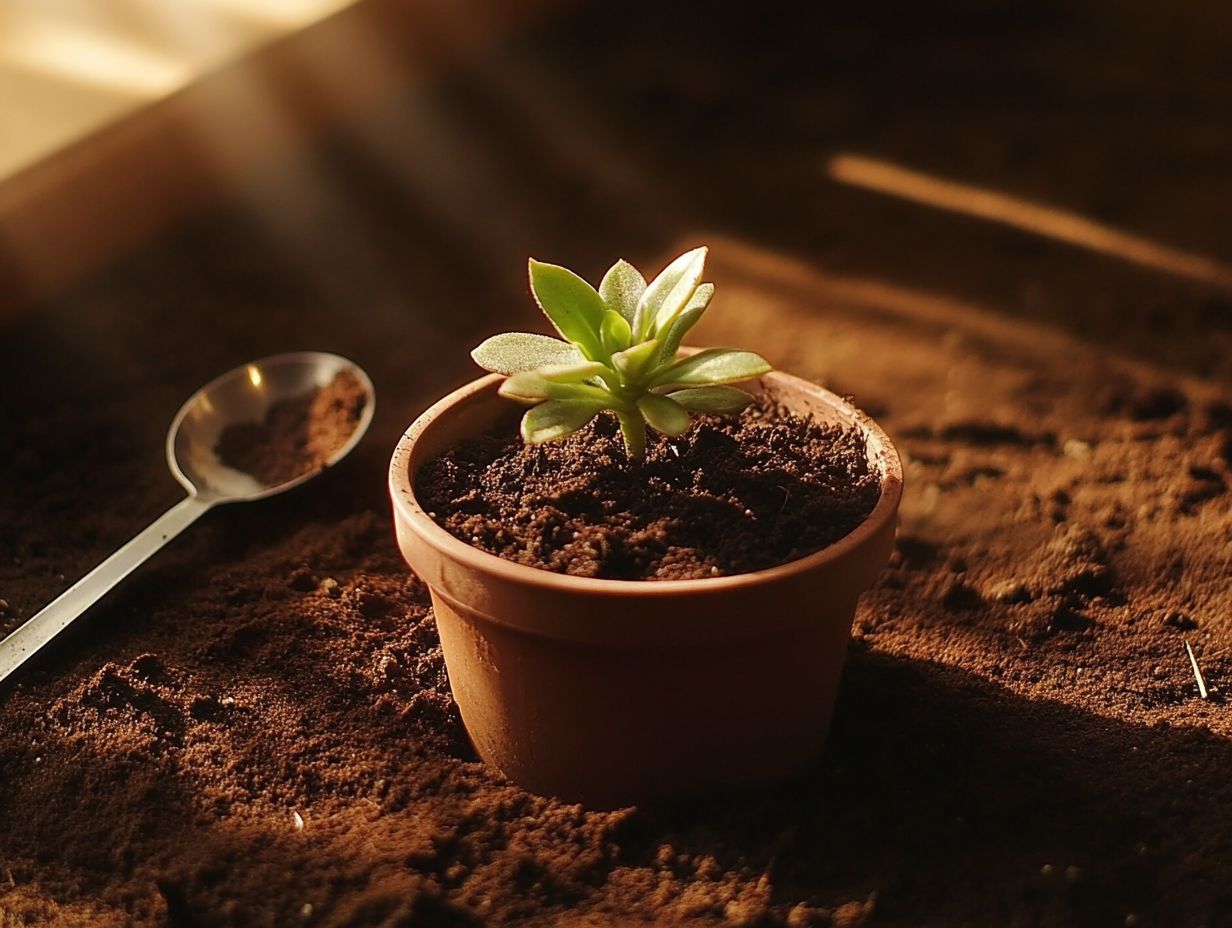
While coffee grounds provide a wealth of benefits, stay alert for potential risks like nutrient toxicity and overuse, which can negatively impact your plants.
Applying too many coffee grounds can disturb the balance of soil nutrients. This can lead to problems such as root rot or even attracting pesky visitors like fungal gnats, which can be detrimental to your indoor plants.
Thus, grasping the right amounts and methods for application is vital to nurturing healthy, thriving plants.
Overuse and Potential Harm to Plants
Overusing coffee grounds in your gardening can lead to nutrient toxicity, harming your plants by disrupting the delicate balance of soil composition. When nitrogen levels spike, you might notice leggy growth and poor flowering, along with increased vulnerability to pests and diseases.
It’s essential to practice moderation and keep a close eye on your plants’ responses to cultivate a healthy growth environment and maintain effective plant care.
Recognizing the symptoms of overuse can differ across plant species. For example, tomato plants may respond with curling leaves or stunted growth, while leafy greens can become overly lush without the necessary structure.
Keeping an eye out for these signs is vital for preserving plant health.
To remedy nutrient imbalances, consider mixing coffee grounds with compost or using them sparingly to enrich the soil without overwhelming it.
Incorporating balanced fertilizers and ensuring adequate drainage can help mitigate potential issues. By following best practices, such as limiting application and mixing coffee grounds with other organic materials, you can promote both environmental sustainability and the vibrant life of your plants.
Ready to see your plants thrive? Start adding coffee grounds today!
Alternative Uses for Coffee Grounds
Beyond their role as a natural fertilizer, coffee grounds present a wealth of alternative uses that can elevate your gardening game. They serve as a natural pest repellent and enhance compost piles.
The rich organic matter in used coffee grounds can boost the activity of tiny organisms that help break down organic matter within your compost, speeding up decomposition and enriching the final product. Their abrasive texture effectively deters pests like slugs and snails, making coffee grounds a valuable tool for any gardener.
You can also use these grounds to improve soil texture and drainage capabilities, allowing your plants to thrive in nutrient-rich environments. When sprinkled around your flower beds or vegetable patches, they create a protective barrier that aids in pest management while releasing essential nutrients as they break down. Their slightly acidic nature is particularly beneficial for acid-loving plants such as roses and blueberries.
The uses for coffee grounds extend beyond gardening. Creative gardeners have even employed coffee grounds in crafts, like natural dyeing for fabrics, showcasing that this humble kitchen waste is full of exciting possibilities.
Whether you mix them into your potting soil or brew them again for a fresh approach to gardening, coffee grounds are undoubtedly your secret weapon in cultivating a thriving garden. Start using coffee grounds today and transform your indoor garden!
Frequently Asked Questions
Can I use coffee grounds in my indoor plant soil?
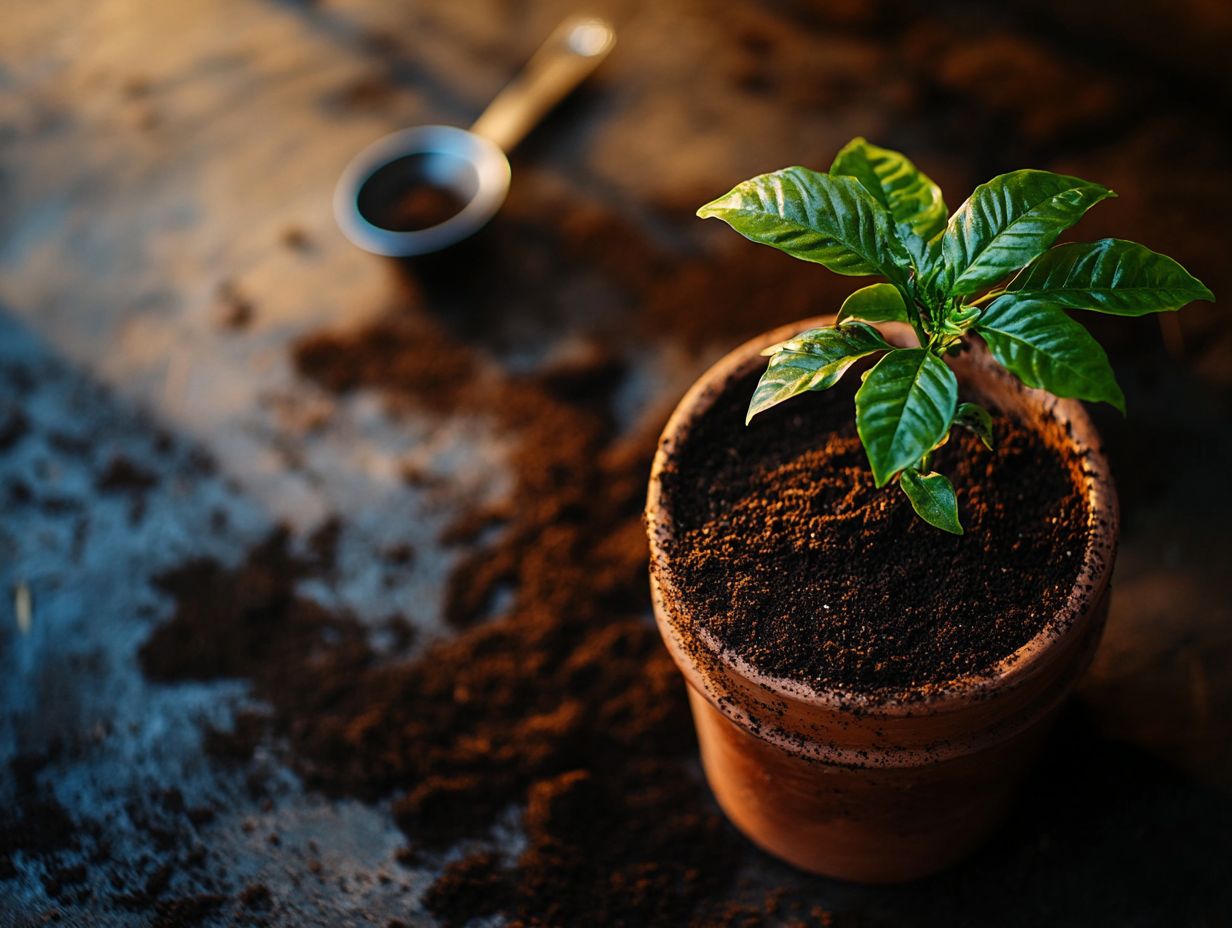
Yes, you can use coffee grounds in your indoor plant soil. They are a great source of nutrients for your plants and can also help with moisture retention.
How should I incorporate coffee grounds into my indoor plant soil?
Coffee grounds can be either mixed into the soil or sprinkled on top. If you choose to mix them in, make sure to do so in moderation, as too much can affect the pH balance of your soil.
What type of plants benefit from coffee grounds in their soil?
Coffee grounds are beneficial for acid-loving plants such as ferns, succulents, and some herbs like rosemary and basil.
How often should I add coffee grounds to my indoor plant soil?
It is recommended to add coffee grounds to your indoor plant soil every 2-3 weeks. This will provide a steady source of nutrients for your plants.
Can I use coffee grounds as a substitute for fertilizer?
Coffee grounds can be used as a supplement to fertilizer, but they should not be used as a substitute entirely. They lack some essential nutrients that plants need to thrive.
Are there any downsides to using coffee grounds in indoor plant soil?
While coffee grounds can provide many benefits, they can also attract pests such as fruit flies if not used properly. It is important to monitor your plants and make sure the coffee grounds are not causing any issues.

